For Better Travel Agent Experience
“Anant Travels” is an online travel platform that allows users to effortlessly search, compare and book flights, hotels & visas.
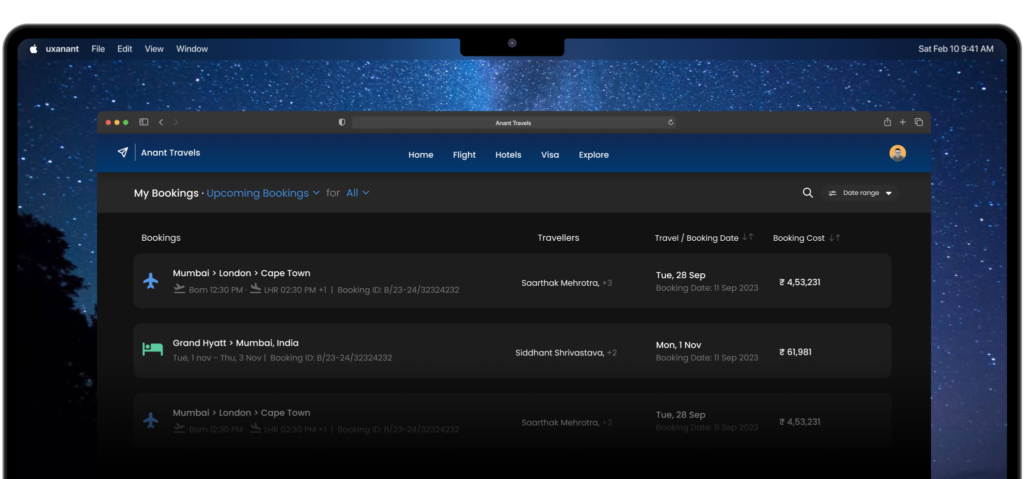
Role
Research, Information Architecture, Visual Design, Prototyping
Status
Development in progress
Tools
Figma, Whimsical

Introduction
How might we increase travel agent productivity and help better service bookings.
B2B
4600+ Travel Agents / Affiliates
B2E
650+ Registered Companies
B2C
4000+ Registered Retail Customers

Understanding Complexity

OLD FLOWS
Managing and servicing phases are broadly divided in two flows. Managing consists of a business use case where travel agent has to follow up with multiple bookings, whereas servicing flow requires travel agent to identify and modify a specific booking.
Travel agents value communication with clients, they want to organize and identify bookings promptly. Deriving insights from my research, which included usability testing and interviews with 5 travel agents. I discovered the following complexities.
COMPLEXITIES
on avg
4.5 min
per service / query
on avg
8 min
per hotel modification
Low discoverability of bookings due to high volume
Due to unavailability of filters it became tedious for travel agents to sift through bookings.
GOALS
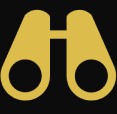


Solutions
SOLVING COMPLEXITY 1
Low discoverability of bookings due to high volume
Before — Poor viewing and filtering experience

After — Simplifying booking organization with product filter
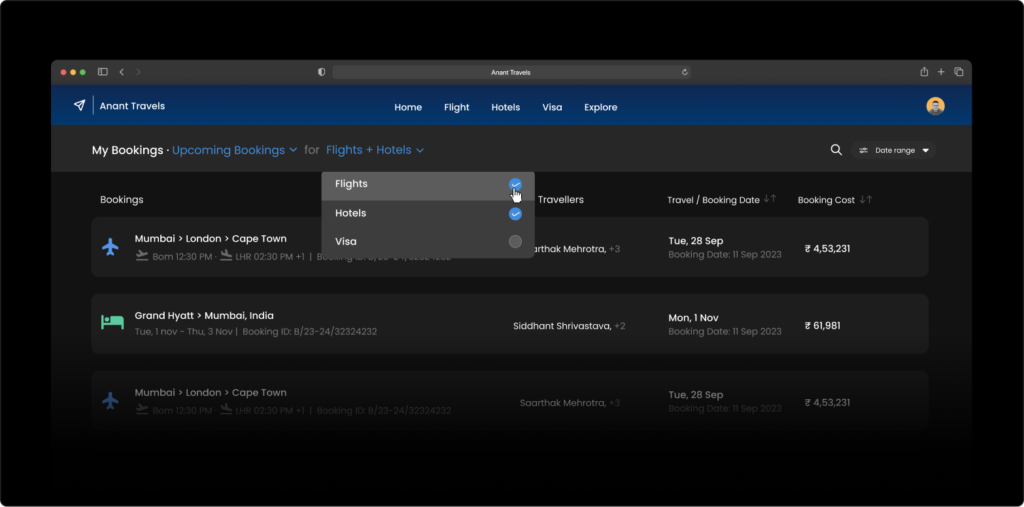




After — Informative & Visual.
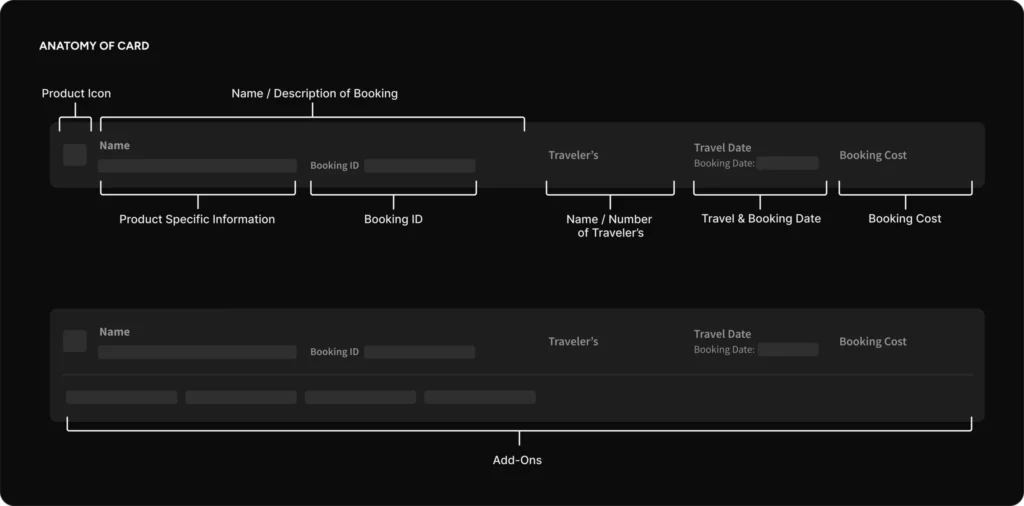

SOLVING COMPLEXITY 2
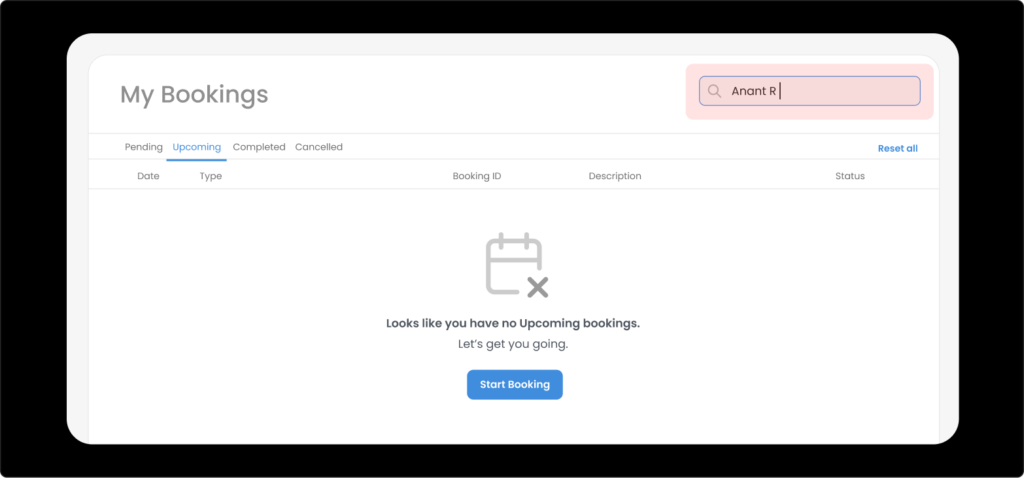

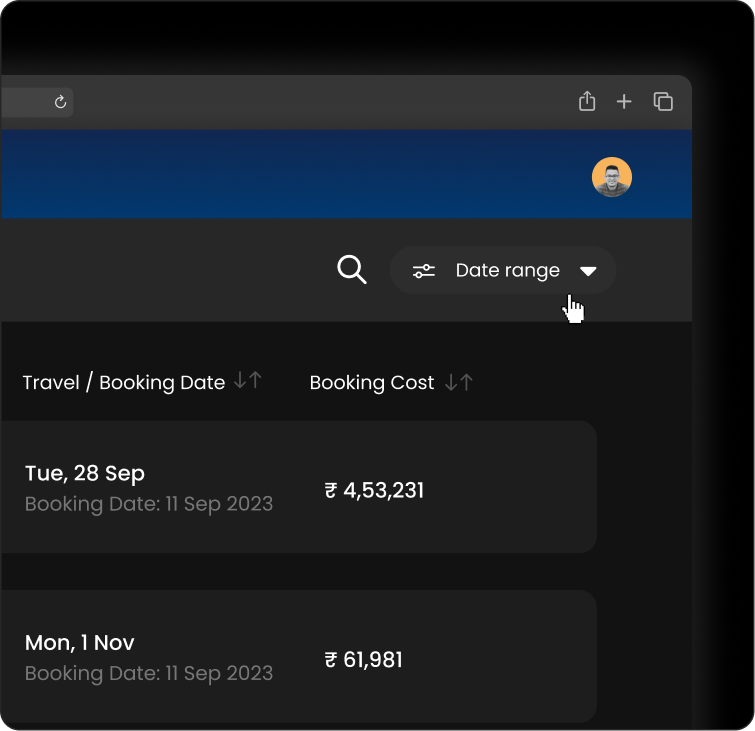
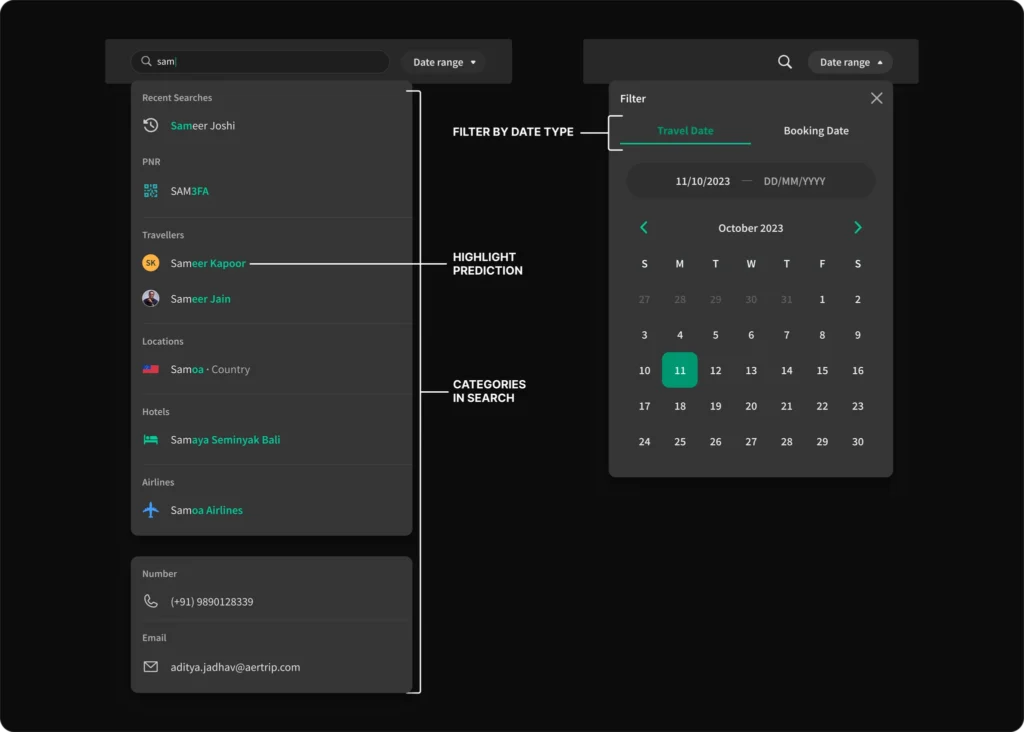
SOLVING COMPLEXITY 3
Exhaustive on call time to modify hotel booking
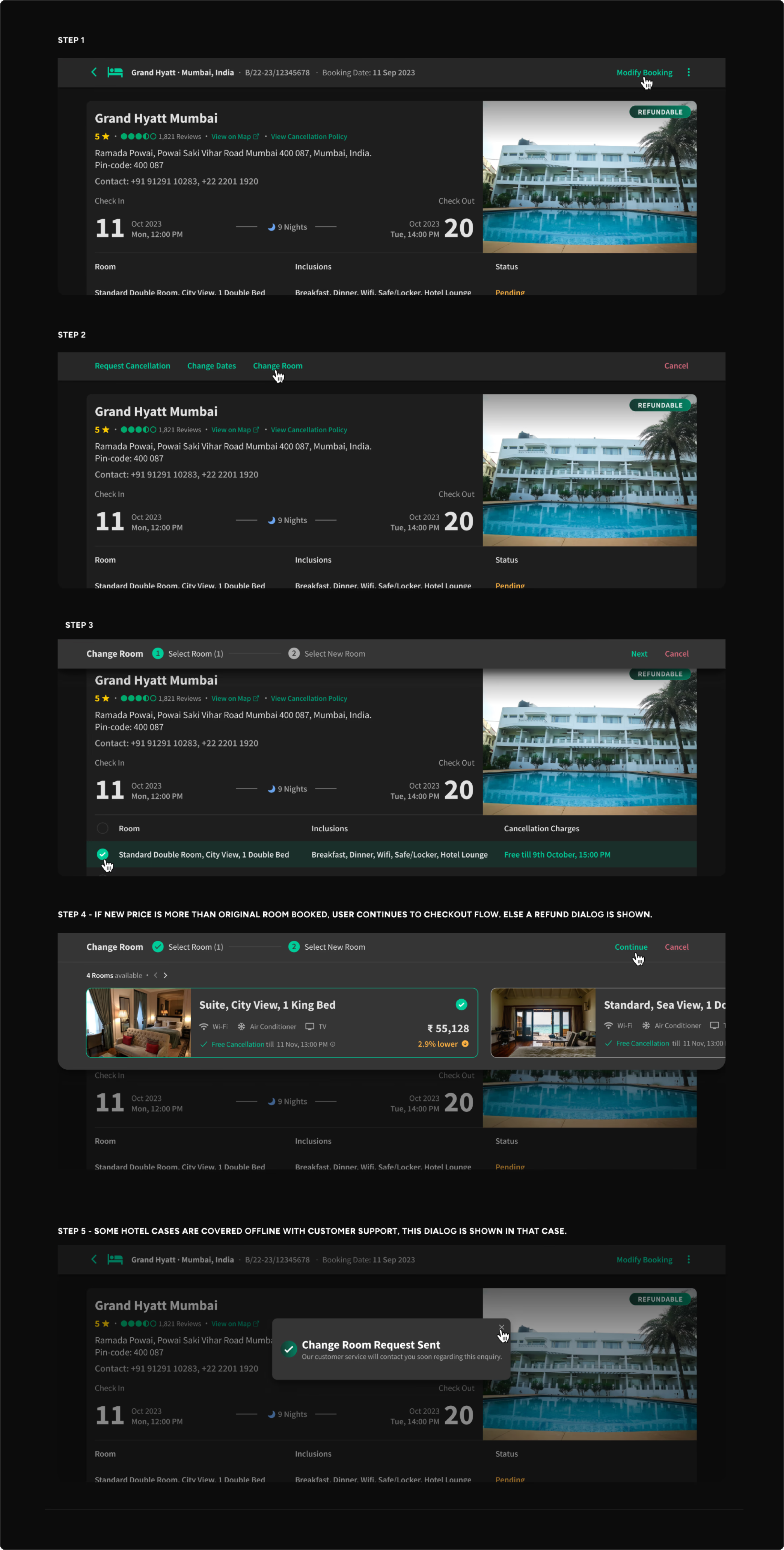

Metrics
on avg
30% time reduction
per service / query
on avg
40% time reduction
per hotel modification

Set scope upfront to reduce ambiguity in project, initially even B2C & B2E was a consideration which was dropped after the first month.

